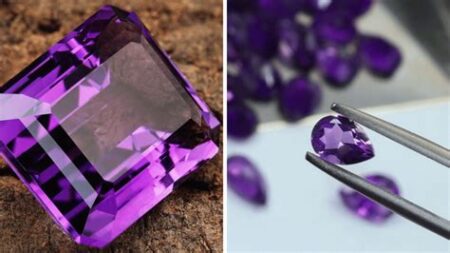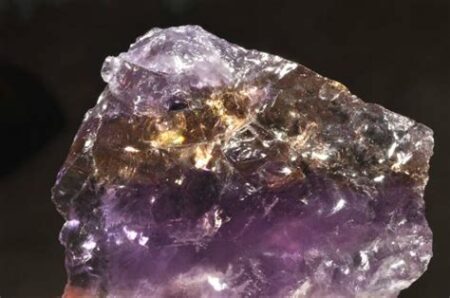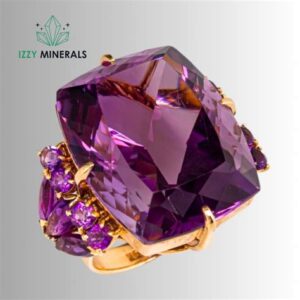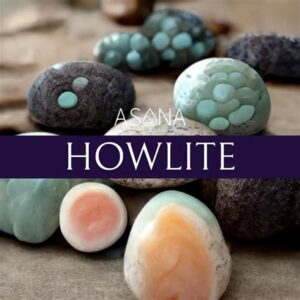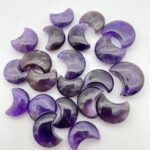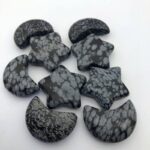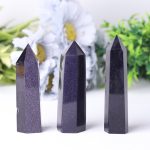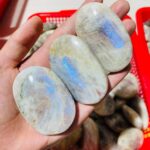The purple-green stone, also known as alexandrite, is a captivating gemstone that has mesmerized collectors and jewelers alike for centuries. Its unique color-changing ability, shifting from a deep purple in incandescent light to a vivid green in sunlight, makes it a true spectacle of nature.
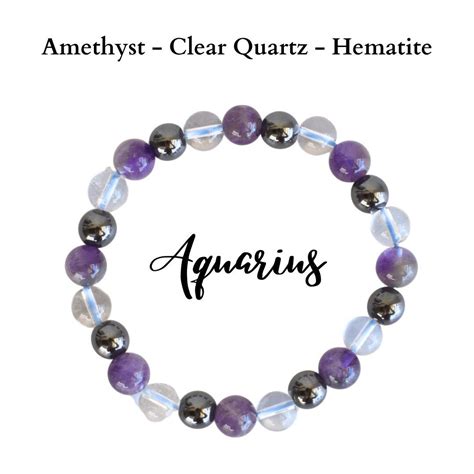
Historical Significance
Alexandrite was first discovered in Russia’s Ural Mountains in 1830. This discovery coincided with the 18th birthday of Tsar Alexander II, and the stone was named in his honor. The Tsar’s fascination with the gemstone led to its popularity among the Russian aristocracy and eventually spread throughout Europe and the world.
Color-Changing Phenomenon
The color-changing property of alexandrite is a result of its unique crystal structure. Alexandrite crystals contain trace amounts of chromium, which absorbs red light from incandescent sources. When exposed to natural sunlight, the crystals scatter blue light, creating the illusion of a green hue.
Mining and Availability
Alexandrite is a relatively rare gemstone, with only a few notable deposits worldwide. The majority of alexandrite is sourced from Russia, with other sources including Brazil, India, and Madagascar. The scarcity of alexandrite contributes to its high value and desirability.
Properties and Composition
Alexandrite is a member of the chrysoberyl family of minerals, which are known for their hardness and durability. Alexandrite has a Mohs hardness rating of 8.5, making it suitable for use in jewelry and other applications where durability is essential. Its chemical composition is BeAl2O4.
Uses and Applications
Alexandrite is primarily used in jewelry, where its color-changing ability adds a captivating element to pendants, earrings, rings, and bracelets. Its unique properties also make it a potential candidate for use in color-changing sensors and other optical applications.
Market Value and Demand
Due to its rarity and unique characteristics, alexandrite commands a premium price in the gemstone market. The value of an alexandrite stone can vary based on its size, clarity, color intensity, and origin. Alexandrite is in high demand among collectors and jewelry enthusiasts, and its price has steadily increased over the past several decades.
Ethical Considerations
As with other gemstones, it is important to consider the ethical sourcing and production of alexandrite. Some alexandrite mining operations have been associated with environmental damage and human rights concerns. Consumers can help ensure ethical practices by supporting reputable dealers who are transparent about their sourcing practices.
Conclusion
The purple-green stone, alexandrite, is a captivating gemstone that has captivated the world for centuries. Its unique color-changing ability, scarcity, and historical significance make it a precious and highly sought-after gem. Whether used in exquisite jewelry or as a potential material for novel applications, alexandrite remains a symbol of beauty, value, and boundless potential.
Additional Information
Table 1: Alexandrite Mining Production
| Country | Production (carats) |
|---|---|
| Russia | 90% |
| Brazil | 5% |
| Madagascar | 3% |
| India | 2% |
Table 2: Alexandrite Properties
| Property | Value |
|---|---|
| Color | Purple-green |
| Mohs Hardness | 8.5 |
| Chemical Composition | BeAl2O4 |
| Specific Gravity | 3.71-3.76 |
| Refractive Index | 1.745-1.755 |
Table 3: Alexandrite Market Value
| Carat Weight | Color Intensity | Value Range |
|---|---|---|
| 0.5-1.0 | Strong | $2,000-$5,000 |
| 1.0-2.0 | Moderate | $5,000-$10,000 |
| 2.0-5.0 | Weak | $10,000-$20,000 |
| 5.0+ | Exceptional | $20,000+ |
Table 4: Alexandrite Applications
| Application | Purpose |
|---|---|
| Jewelry | Pendants, earrings, rings, bracelets |
| Color-Changing Sensors | Detecting changes in light intensity |
| Optics | Color-filtering devices |
| Gem Exploration | Identifying potential alexandrite deposits |

